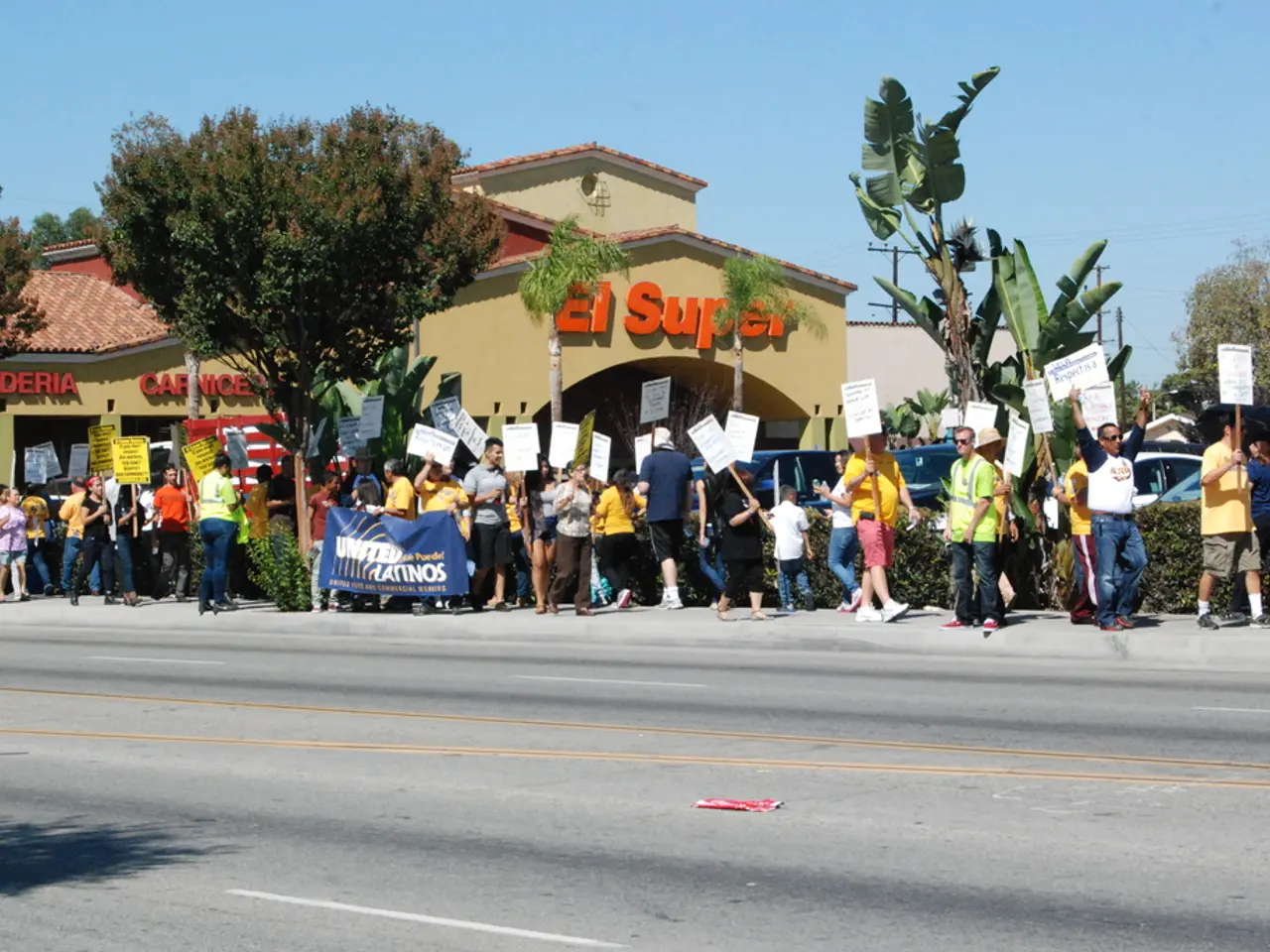Don't Discount the Influence of Independent Contenders in Elections
In the upcoming 2024 election, third-party candidates could potentially play a significant role, as indicated by polls suggesting that only 4 in 10 Americans favour either Trump or Biden [1]. This open space presents an opportunity for a third-party candidate to attract a substantial percentage of votes.
One such contender is Jill Stein, leader of the Green Party, who is running on a platform advocating for an "economic bill of rights" and strong support for combating climate change and ending America's militaristic foreign policy strategy [2]. Her campaign mirrors the trend of third-party candidates becoming increasingly popular in American politics, especially during periods of high political division.
Third-party candidates have historically made a significant impact in U.S. presidential elections, despite rarely winning the presidency. Their influence often lies in splitting major party votes, affecting election outcomes, highlighting specific issues, and influencing the platforms of major parties [3].
One of the most notable third-party candidates was Theodore Roosevelt, who ran as the Progressive (Bull Moose) Party candidate in 1912 after failing to secure the Republican nomination. He garnered 27% of the popular vote and 88 electoral votes, a remarkable feat for a third-party candidate [3]. His campaign split the Republican vote, helping Democrat Woodrow Wilson win the presidency, and brought progressive reforms and labour issues to the political forefront.
Another influential third-party candidate was George Wallace, who ran for the American Independent Party in 1968. Representing segregationist and southern populist interests, Wallace won five southern states and 46 electoral votes—the most for any third-party candidate since 1948. His campaign demonstrated the power of concentrated regional third-party support amid national party divisions [2].
Ross Perot, an independent candidate in 1992, captured about 19% of the popular vote but no electoral votes, marking the strongest third-party popular showing in decades [4]. His focus on deficit reduction and government reform appealed broadly but lacked concentrated geographic support. Though he did not win any states, his candidacy is credited with highlighting fiscal issues and possibly influencing the major parties’ platforms and campaign strategies.
Ralph Nader, running as a Green Party candidate, is often cited for siphoning votes from Democrats, particularly in the 2000 election, potentially tipping the race to Republican George W. Bush. Nader focused on consumer rights, environmentalism, and corporate accountability, pressuring major parties to address these issues [1].
More recent figures associated with third-party or independent runs include Robert F. Kennedy Jr., who has campaigned on public health skepticism and environmental advocacy. While his electoral impact has yet to be significant, his candidacies illustrate ongoing efforts of third-party candidates to challenge major party dominance and bring attention to specific issues.
Cornel West, a progressive activist and professor, is running as a third-party candidate under the banner of the People's Party, with a platform focusing on drastic military budget cuts, combating climate change, and passing Medicare for All [6].
The 2024 election is expected to be a tight race, and a strong third-party candidate could potentially tip the election and redefine American democracy for decades to come. The independent group New Labels is also considering putting forth a candidate in the 2024 election, which could further impact the field.
As the 2024 election approaches, the potential impact of third-party candidates cannot be underestimated. Their campaigns have the power to shape the future of American government, as demonstrated by historical examples such as Theodore Roosevelt, George Wallace, Ross Perot, Ralph Nader, and Jill Stein. The upcoming election promises to be another chapter in the ongoing story of third-party candidates and their influence on U.S. politics.
References:
- FiveThirtyEight
- New York Times
- Britannica
- CNN
- History.com
- The Guardian
- The upcoming 2024 election could witness a significant role for third-party candidates, as shown by the decline in favorability of both Trump and Biden, aligning with historical trends where such candidates often highlight specific issues, as seen in the campaigns of Jill Stein, Ross Perot, and Ralph Nader.
- In the realm of video content, documentaries could be produced to delve into the history, impact, and cultural significance of third-party candidates in American politics, comparing candidates like Theodore Roosevelt, George Wallace, and Ross Perot, who have had considerable influence despite not winning the presidency.
- The general-news landscape offers potential for editorials examining the potential political repercussions of third-party candidates in the 2024 election, considering the divided nature of American politics and the opportunity for a substantial percentage of votes to be acquired by a third-party candidate, as demonstrated in the past, and how this could affect the platforms of major parties and the election outcome.







